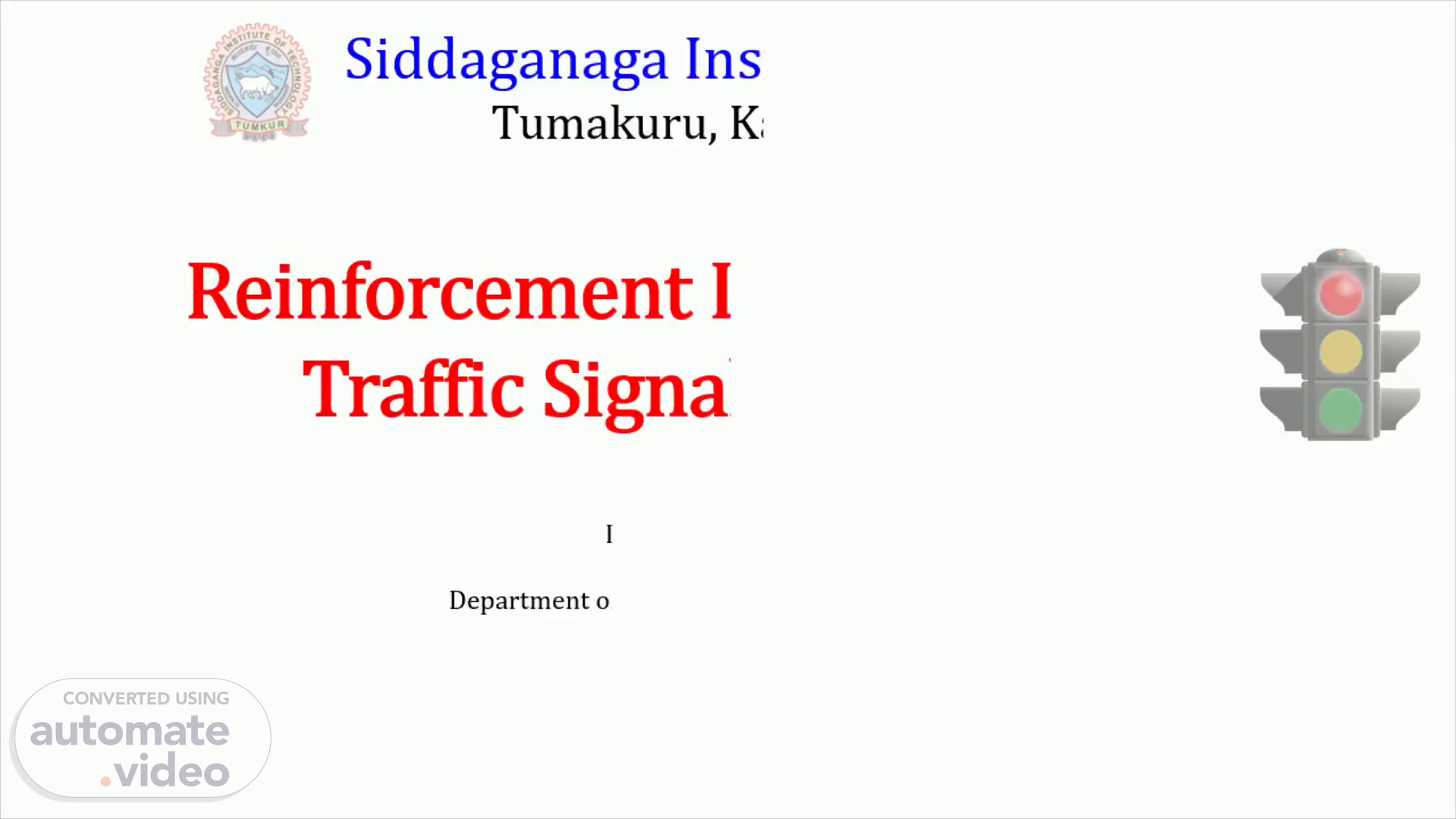
PowerPoint Presentation
Scene 1 (0s)
Reinforcement Learning based Traffic Signal Controller.
Scene 2 (2s)
Concept of reinforcement learning. System Environment Reward (r) New Sate (s') Agent State (s) Policy Action (a) Agent task types OR Ooti0Qoos Method of Implementation State tion State Action.
Scene 3 (4s)
Representation of traffic signal controller using RL.
Scene 4 (6s)
Simulation process. Siddaganga Institute of Technology.
Scene 5 (9s)
Simulation tool : SUMO (Simulation of Urban MObility).
Scene 6 (14s)
Siddaganga Institute of Technology. Four different models are designed as follows for both peak and off-peak hours based on traffic data and the number of agents used. M1: Actuated traffic signal controller is the base model for all the controllers, and in this model, the signals are configured based on preliminary analysis and independent of dynamic traffic demands. M2: Dynamic signal planning using a reinforcement learning agent to handle all the intersecting roads. In this case, the state is represented as a count of each type of vehicle. M3: Dynamic signal planning using a reinforcement learning agent to handle all the intersecting roads. Traffic volume in PCU (Passenger Car Unit) is considered as the state. M4: Dynamic signal planning using a dedicated reinforcement learning agent to handle each intersecting road. Hence, multiple agents are used to plan the signal configuration in coordination with each other by considering traffic composition as a state..
Scene 7 (16s)
[image] Chart line chart Description automatically generated.
Scene 8 (18s)
Simulation results. Average delay encountered by the vehicles.